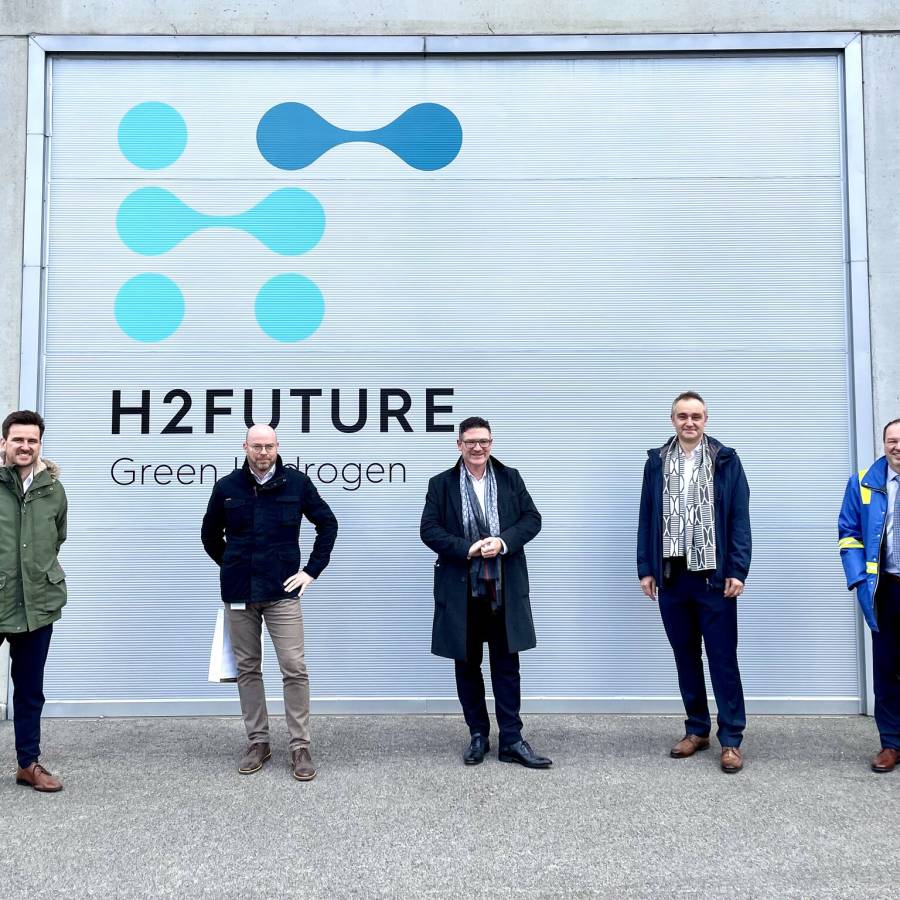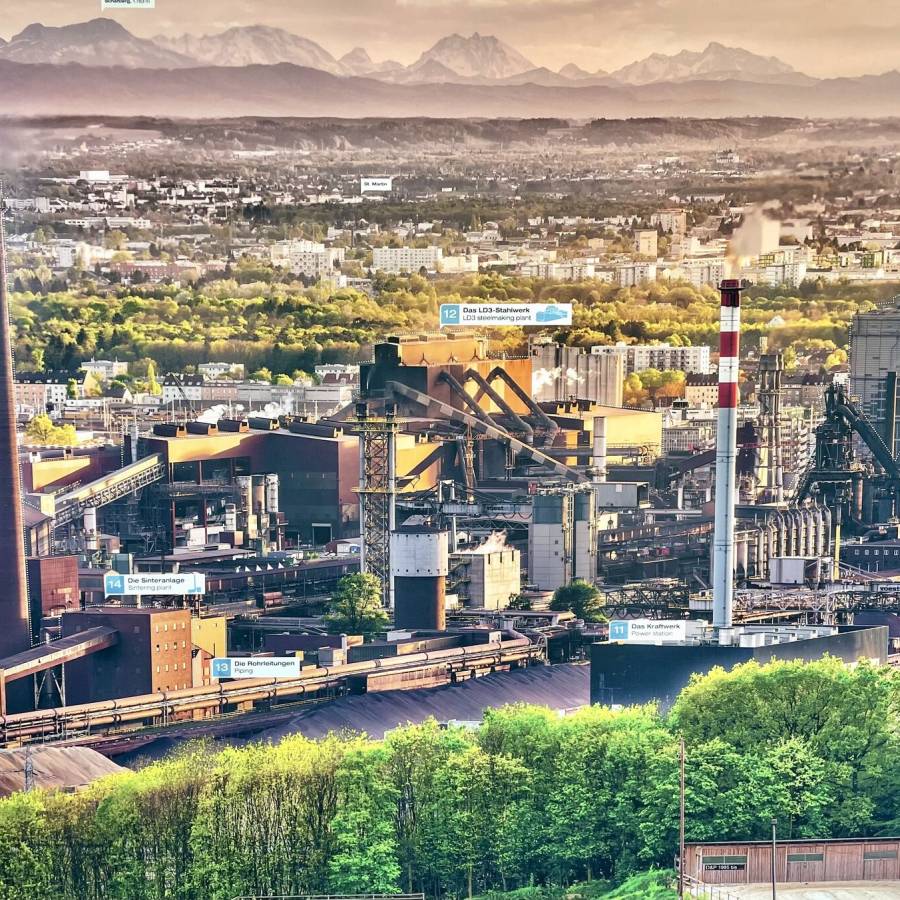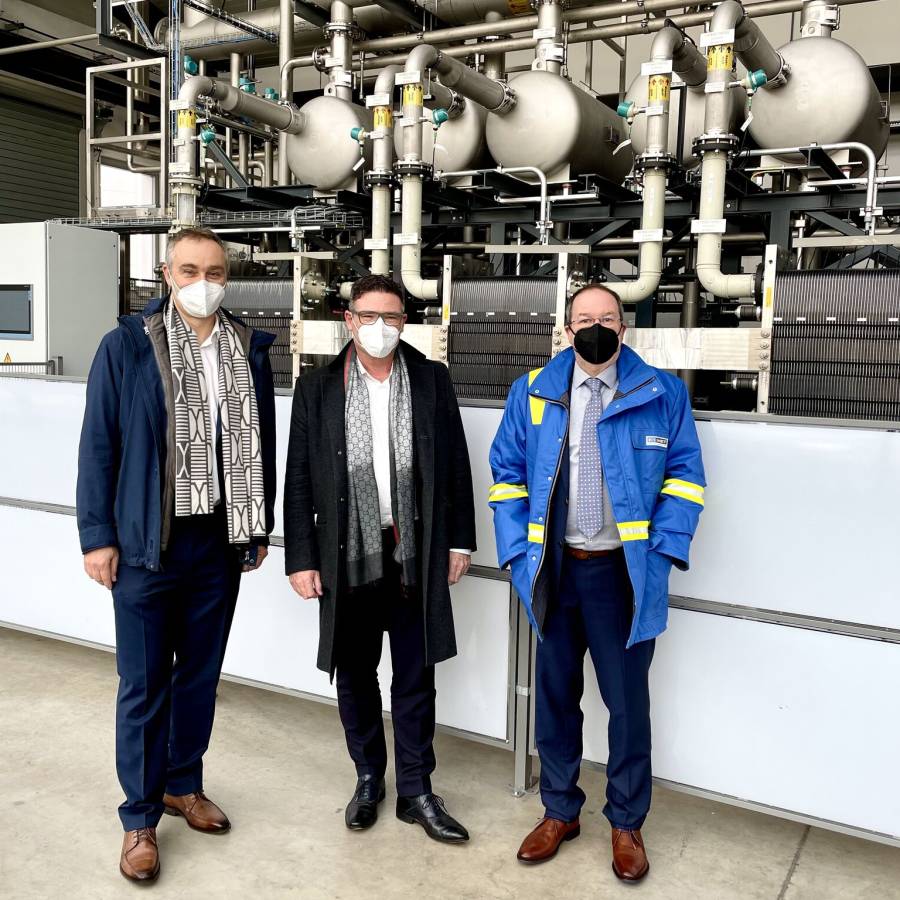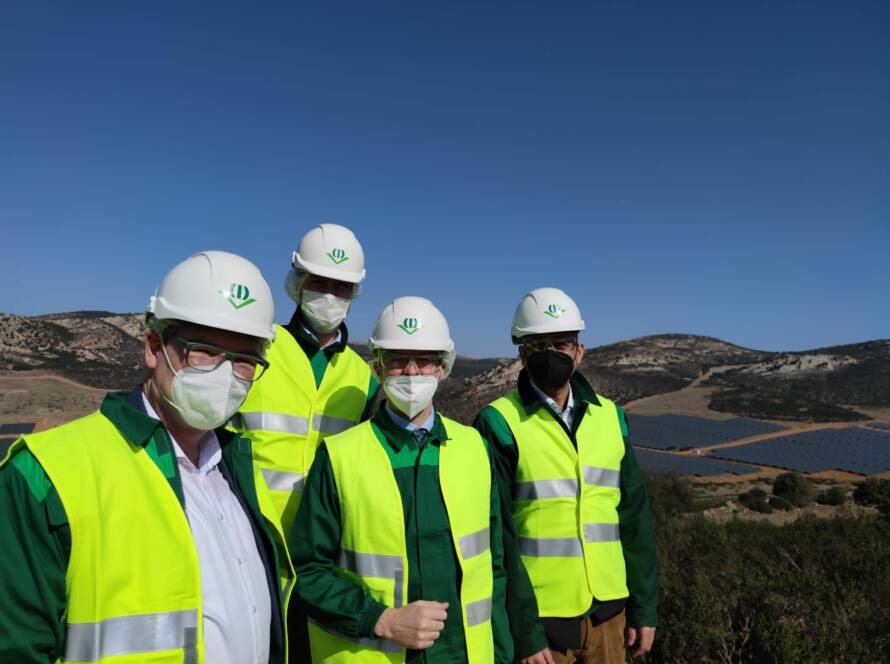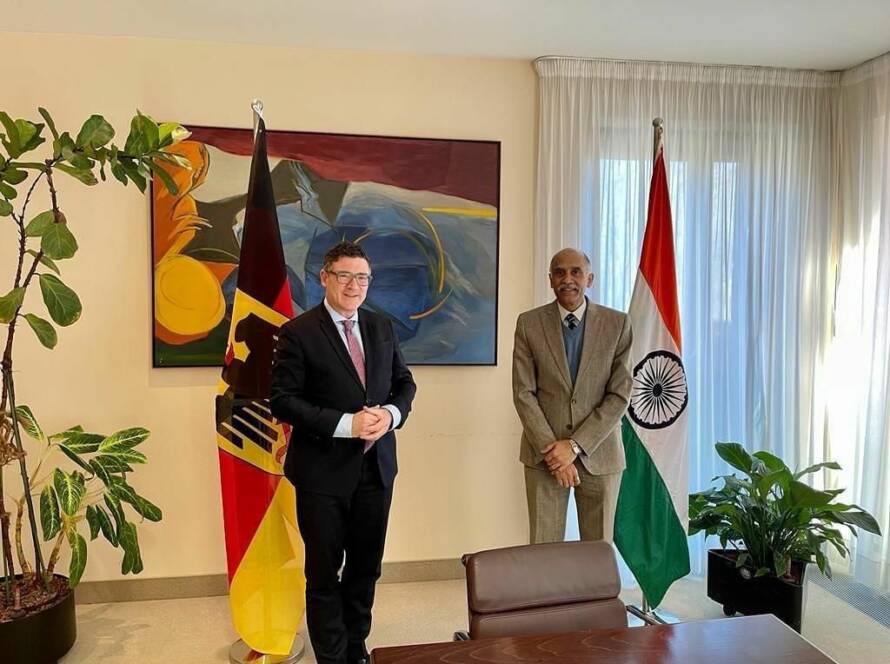Visit to voestalpine in Linz (Upper Austria), a world-leading steel and technology group. The company produces around 12 million tonnes of CO2 at two steelworks locations – and is thus responsible for around 15% of Austria’s CO2 emissions. Already in 2016, the first steps were taken to produce the steel CO2-free in the future. To this end, the then most modern and, with a connected load of 6MW, largest electrolyser successfully went into operation at the voestalpine site in Linz in November 2019, thus setting an international milestone. With the EU-funded 18-million project H2FUTURE, the partners voestalpine, VERBUND, Siemens Energy, Austrian Power Grid AG , K1-MET GmbH and TNO are researching the industrial production of green hydrogen, which is intended to replace fossil fuels in steel production in the long term. One important finding from the visit: Germany and Austria should work closely together in researching the most promising processes for the production of green steel. After all, the interests and goals of the European steel industry are aligned. Above all, only 10% of the world’s steel is produced in Europe. Incidentally, at the meeting with, among others, R&D head Thomas Buergler, strategy head Christian Presslmayer, SVP Matthias Pastl, project manager Hermann Wolfmeir and Stefan Sigel, we were also concerned with the question of how and from where Voestalpine and Austria will obtain the required quantities of green hydrogen in the future.
